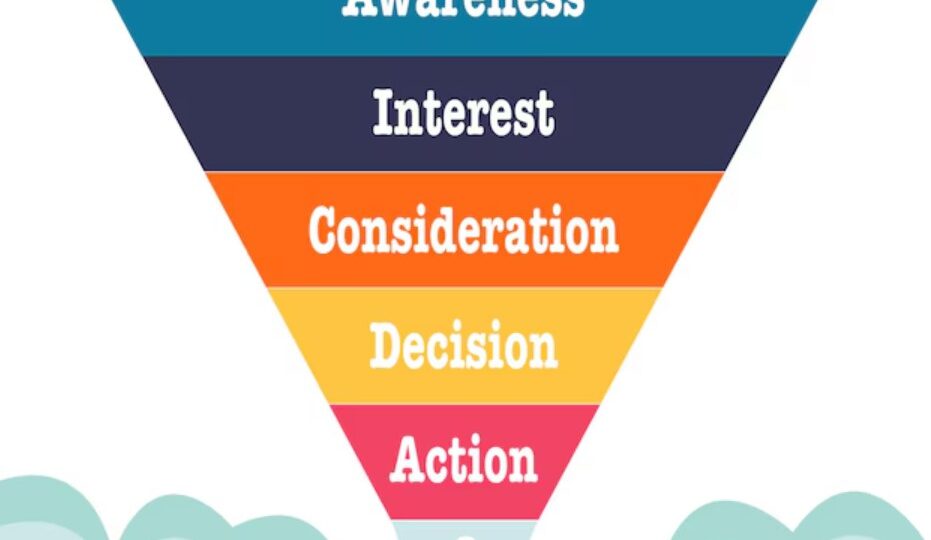Lead generation and sales funnel optimization go hand in hand with sales growth for any business. Every prospect that is being brought to your website through boosting your sales pipeline ultimately becomes a stakeholder for you. But the question stands is, “What is this sales funnel, and how do people even make it?”
Well, if you are just starting out with your business, you might want to stick by because we are going to discuss everything “sales funnel” in this blog. We will talk about what this business instrument is and how even to make one. So, stick by.
What Actually Is A Sales Funnel, And What Does a Sales Funnel Do?
When you first hear about a jewellery brand that sells anti-tarnish jewellery through an Instagram Ad, you are hooked to at least check their website. If it interests you enough, you might even scroll through the products page for a good 20 minutes. Lastly, you either come to the conclusion that the jewellery pieces may be too expensive and leave the website for later, or maybe it is something you will purchase later, or you might just make the purchase.
This whole journey, from hearing about a business to landing on its database, is exactly what a sales funnel is. It is the prospect’s way through the sales pipeline of the business until somehow they are getting acquainted with the business.
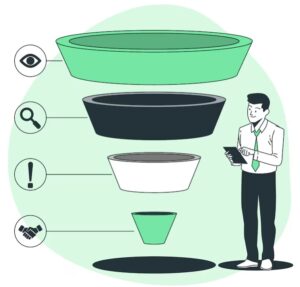
This customer journey, however, does not entirely depend on a prospect. They are merely there because a marketing personnel has led them into it through outreach. Starting from the top of the funnel, the prospect is led to the middle funnel, and to the bottom funnel, which is mainly buying decisions.
With most organizations, a sales funnel may differ from the general style. However, no matter what the funnel structure may be, management is what keeps it running. Automation, media management tools, etc, are all important instruments for managing a sales funnel.
What Are The Kinds of Stages In a Sales Funnel Of a Business?
Sales funnel models can vary, as mentioned before. There are AIDA (Awareness, Interest, Decision, Action) models, the new and popularized flywheel model, and probably ten more. But, here’s what are the stages of a general and basic sales funnel model.
1. Awareness
From the previous example of the jewelry brand, a person reaches your website through an ad. This is what awareness is at the top of the sales funnel. In general cases, prospects can also be introduced to your business through blogs, social media ads, etc.
2. Interest
When the jewellery brand ad somehow hooks a person, they are now certainly curious about affordable anti-tarnish jewellery. Hence, a prospect is showing interest in what the brand offers. As a brand, your duty here is to build an outstanding website catalogue, hold up testimonials, and include product/service-related educational content for prospects to follow.
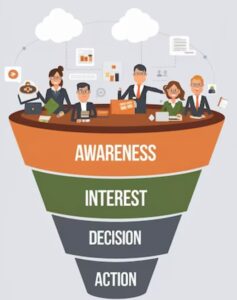
3. Decision
When a person is somehow convinced that the jewellery pieces are indeed affordable and have good collections with reviews, they have to come to a purchase decision. To buy or not to buy. Here, you are more intended to push a purchasing decision either through prices, extra customization services, or even detailed product comparison guides.
4. Sale
If a person has gone through all the details of the jewellery piece on the product page and is purchasing the piece, the sales funnel has given its maximum outcome. In this bottom-funnel stage, you can make the purchase process easier by offering proper CTAs, payment methods, transit and delivery estimations, etc.
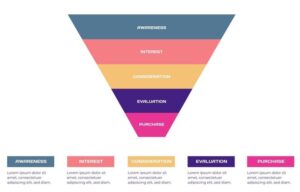
5. Retainment
Following the same example, the supposed person has tried the product and has had his experience. So, will he buy the same jewellery brand again? Retainment stands as the last step of the sales funnel, where the brand has to facilitate customer-friendly programs to train them back into buying.
How Can You Create A Sales Funnel As a Newbie?
A big part of the sales funnel is good and personalized content. Content marketing plays a great role in the awareness stage of the sales pipeline. And you can start with it by:
1. Finding The Needed Audience
What makes up your potential buyer? Who are you making your products/services for? These are the things that go into finding a target audience. But how to start with that?
- You create your ICT (Ideal Customer Type)
- Navigate these audiences over websites, what time they spend reading what kind of content, link clicks, start online surveys, etc.
- Keep track of social media interactions
2. Finding The Need Of The Audience
Figure what your potential customer needs by:
- Pining on pain points
- Figuring out how an outreach approach will not be suitable
- Find influential points of their purchase decision
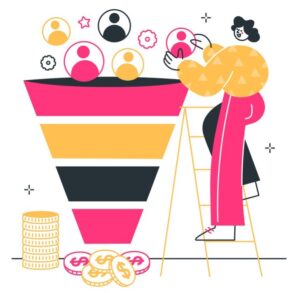
3. Align Your Goals
Prospects at different stages of your funnel need varying attention. Start by:
- Increasing website and ad traffic to pool audience on the top of the sales funnel.
- Boosting prospect engagement to fill the middle of the sales.
- Pushing conversion rates to fill the bottom of the sales funnel.
4. Create Improvised & Impactful Content
Now that you are aware of what your audience at each stage is like, you can deliver content accordingly.
- Create guides and blogs about your product/services.
- Post educational videos like product tutorials, professional reviews, etc.
- Make content that can build engagement over social media platforms.
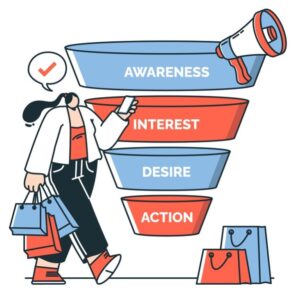
5. Retention & Renew
Your old customers and cold prospects can be buying customers if you try harder in your sales outreach. You can:
- Set automated email campaigns personalized individually for cold prospects and old customers. For example, cart reminders, offering newsletters, etc.
- Hold loyalty programs.
- Host brand webinars offer master classes, etc.
6. Engagement
With your goals at each stage of the funnel set, you can now accordingly engage with prospects. Keep in mind:
- Your approach at every level of the sales funnel must be direct yet personalized.
- Your brand message and solutions must be transparent to the prospects,
- You should be open to queries through every platform of engagement there is.
7. Make Purchasing Easier
After fair initiatives of engagement, your potential buyers are at the bottom of the funnel. Here, you can push the purchasing decision by:
- Offer pricing guides, customization services, and product guides.
- Mention a straightforward CTA.
- Provide easy payment modes, transit actions, order tracking, delivery estimations, etc.
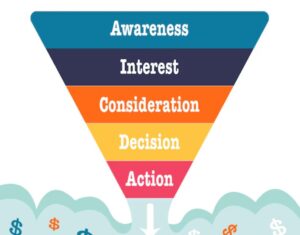
8. Follow-up
Purchase and sales of goods/services are not the end of your sales funnel in any way. It is indeed very pressing to to keep tabs on your customers, about they feel about the experience with your business, etc. You can:
- Reach them for feedback.
- Initiate queries regarding any assistance with your product/service.
- Help them participate in customer programs, offer them discount vouchers, etc.
So, Can You, Too, Build An Effective Sales Funnel For Your Business?
Building a sales funnel for your business campaigns is no complex maths. The process requires straightforward inputs and, perhaps, more attention span and time to boost those efforts. Once that is acquired, you will have no problem creating a sales funnel from the very scratch.
Locate your audience, build awareness and curiosity, and boost your content marketing strategy from there. Following these steps will give you an outline of what you can do primarily for consumer growth in your business.

